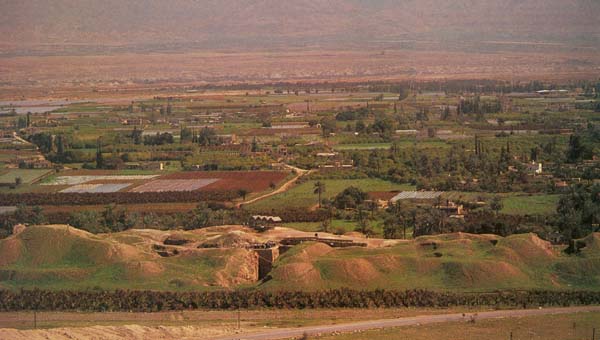Image Details

Richard Nowitz
Jericho’s abundant water supply, favorable climate and geographic location made it a key site in ancient Canaan. Anyone who wished to conquer the central hill country from the east, as the Bible describes Joshua and the Israelites doing, would first need to secure Jericho.
Archaeologists have long debated whether the Israelites in fact conquered Jericho. Dame Kathleen Kenyon, who excavated Jericho in the 1950s, claimed that Jericho was destroyed in the 16th century B.C.E. and there was no walled city at Tell es-Sultan for Joshua to conquer. A comprehensive new survey of Kenyon’s evidence at Jericho, however, has led author Bryant Wood to conclude that a walled city existed at Jericho until about 1400 B.C.E. when it was destroyed in a conquest strikingly similar to the Biblical account. The 1400 B.C.E. conquest would match the chronology derived from the Bible. However, it is about 150 to 200 years earlier than the time most scholars believe the Israelites were to be found as a people living in Canaan.
